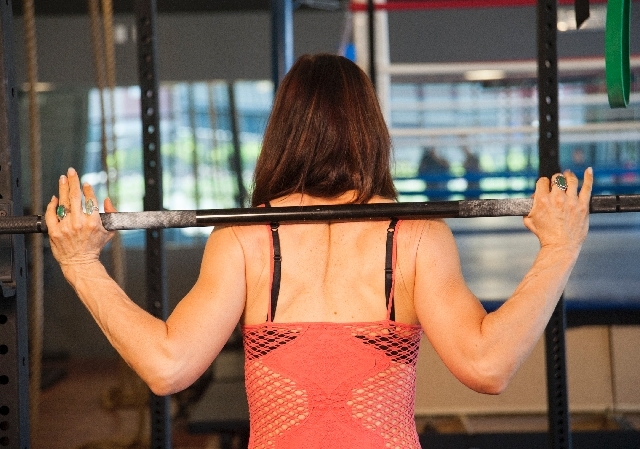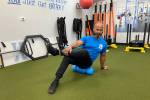Ready to add weight to your squats? Mind your form
“How did it feel?” I asked one of my athletes last week as I coached him during a lift.
“It felt easy,” he replied.
“Good, now add more weight,” I responded.
Our bodies are capable of amazing feats. Watching an Olympic lifter or gymnast will convince anyone of the power humans can exert.
Much of those impressive movements center on mechanics and technique combined with practice and strength.
Whether you believe we were designed or evolved, the ability of full body motion relies on hip extension. The straightening of the leg at the hip is crucial to many daily tasks. We use hip extension to run, jump, lift and perform the most routine activities.
If you have been working on your unweighted squats and are ready to kick it up a notch by adding a barbell, this is the column for you. These are the things I wish I had known starting off.
An efficient squat has many nuances that may take time to master. The pros dedicate years to this movement to work out all the kinks.
If you want to break records, then long-term coaching may be in your future. For the average Joe and Jane, a calibrated eye and regular practice are all you need to gain the benefits of weighted squats.
My first piece of advice is safety. Use the squat rack at your gym. It is a huge, bulky cage with adjustable rack heights and crash bars. Set your pins so the barbell is just below your collar bone. Use the crash bars. These are the two long metal bars that keep the weight from crashing down on top of you. They let the weight drop only so far. Set those at a level about halfway between your hip and knee.
Use a spotter, maybe two. Get some friends to watch your form and help you handle the weight.
When you watch someone perform a squat, I recommend a few things to look for. A person’s form will cue a technique issue to be addressed. Once they are made aware of the problem, most people can correct it on their own. If they still can’t get it right, more practice is in order and maybe some mobility work with the foam roller.
The first thing to watch is the spine. A rounded upper back means the core is not tight. However, there is a natural lumbar curve in the lower back that needs to be maintained for the entire movement.
Second is that the weight of the body is on the heels. The athletes should be able to lift the toes if their weight is on their heels. Weight on the toes means the heels will rise and the athlete could fall forward under a loaded bar.
Third is that the hip crease must be below the knee. This signifies a full-range squat. If you do not have a pre-existing knee injury and still can’t attain the full range of motion, see a trainer at your gym to have him or her give you an assessment. The issue could be related to mobility and trainers have some foam roller techniques that can help. If you have knee injuries, you should ask your doctor if you should be squatting with weight.
The fourth visual cue is that the knees are actively being driven out so they track over the toes. This ensures gluteal activation and maintains proper torque at the hip joint. When knees crash inward, the body is trying to stabilize itself incorrectly.
These four cues are the most important for those who want to incorporate weighted squatting into their routines. Some finer points are the path of the bar and even the placement of the bar on your back.
Optimally, the path of the bar should be a straight line from its starting position at the top to its lowest position at the bottom. If you were to look at the body in profile, with your mind’s eye draw a line from the bar to the middle of the foot. That is the bar path. If the bar goes too far forward or too far back in relation to that imaginary line, your body has to work harder during the movement. That is wasted energy that could have been spent lifting heavier weight or to get one more repetition. The heavier the bar gets, the more noticeable this element of the squat will become.
Bar position can play a role in the effectiveness of your squat exercise. The bar is on the shoulders as part of a back squat. But where on the shoulders? Higher on the meat of the trapezius, or an inch or two lower on the deltoids? The answer has a bit of preference as well as mechanical elements to it. High bar versus low bar is still disputed among lifters.
High bar refers to the bar’s position on the meat of the trapezius muscle. Low bar position is when the bar is positioned a little lower on the shoulders. Both are safe ways of positing the bar. But why does it matter?
High bar is the way it’s done in the Olympics. It is comfortable for most lifters. The hip angle at the lowest point of the squat is more obtuse than the low bar position and requires a slightly more vertical torso than the low bar. Because of the acute knee angle, it shortens the hamstrings to a point of not being as effective in hip extension. The glutes and adductors do most of the work. That’s why you may “feel” them worked more the next day.
Low bar uses all of the posterior chain muscles. Because of the bar position, the hip angle is more acute than high bar and the knee angle is more obtuse. This means the hamstring has room to contract and aid more in the hip extension needed to stand up. Low bar uses more muscles and an argument can be made that it is better for general conditioning purposes.
Pick one, or vary your training by using both. You can even experiment with a PVC pipe to find the right spot for you.
Chris Huth is a Las Vegas trainer. He can be reached at 702trainer@gmail.com. If you are a Las Vegas trainer and want to share your love of fitness as a guest coach, please contact him. Consult your physician before beginning any exercise program.































